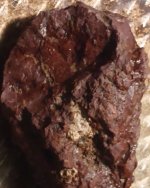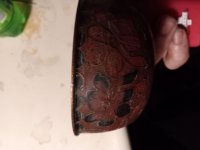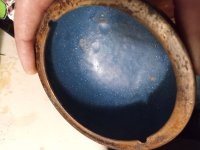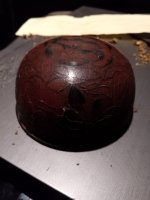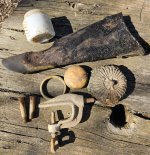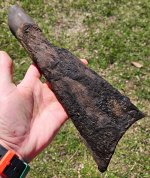You are using an out of date browser. It may not display this or other websites correctly.
You should upgrade or use an alternative browser.
You should upgrade or use an alternative browser.
Trying to figure out what this is I think it might be a sound bowl I found it at the bottom of the lake with the water that was being lower
- Thread starter Danual
- Start date
- Thread starter
- #23
And remember manganese oxide is blue it only turns Gold after processed by a metallurgistI don't think these Cooley workers were using borax for flux though I would like to know what kind of f**** they used probably something we don't know probably something we don't use
Upvote
0
- Thread starter
- #24
This bowl was found by a metal detector and that's how I found the rock too both the same numbers on the metal detector high 90s there's a damn this thing just like the bowl is made out of a hot rock or like you get a nugget hit and some really mineralized ground like at the dunsburg L DD ma
Upvote
0
- Thread starter
- #25
And Bigfoot kind of like Bigfoot but these guys made their own capels so working with silica would be nothing for these guys so Bigfoot got s*** on themColor to be added to the silica, alumina and flux glaze out of some minerals could happen but never from a rock. The OP is showing a rock.
The minerals most commonly used as coloring in glazes are all metal oxides or metal carbonates. Mostly combinations of copper, iron, chromium, vanadium and cobalt are used. These oxides and carbonates are created in a distinctly separate process usually involving quite a bit of other minerals, chemistry, grinding and heat processing. Although there are a few naturally occurring metal oxides and carbonates that can color glazes no modern potter would rely on those raw materials to produce commercial grade glazed pottery.
The OP shows a very professionally manufactured bowl with one of the glazed surfaces visually similar to the color of a rock they found. I can state with absolute certainty that the rock was not used in the creation of the glazes on the bowl shown.
Of course theoretically the rock could have been produced by an ancient society of bigfoot potters and buried so the OP could discover the rock after they acquired the bowl....
But I'm darn sure that didn't happen either
Upvote
0
- Thread starter
- #27
Matter of fact that just reminded me I can check USGS or the diggings or a few other sites to see if that's a meal site or an assay shop if they have records on itOr maybe you don't know what to do when you seen essay shop you do know what to do when you see an essay shop right
Upvote
0
- Thread starter
- #28
Or Bigfoot will tell me cuz only me and him know where every single mind and audit anything on record I can find it Mill sites placer mines hard Rock mines anything I want to see all on my Google Earth thank you usgsMatter of fact that just reminded me I can check USGS or the diggings or a few other sites to see if that's a meal site or an assay shop if they have records on it
Upvote
0
Top Member Reactions
-
 2605
2605 -
 1156
1156 -
 1047
1047 -
 892
892 -
 874
874 -
 848
848 -
 787
787 -
 675
675 -
 659
659 -
 642
642 -
 494
494 -
 472
472 -
 467
467 -
 465
465 -
 459
459 -
 432
432 -
 415
415 -
 408
408 -
O
401
-
 389
389
Users who are viewing this thread
Total: 2 (members: 0, guests: 2)
Latest Discussions
-
-
-
"GLORY DAYS" for Ol' timers thread... let's have fun & share..!
- Latest: Bucket Lister
-
-
-
